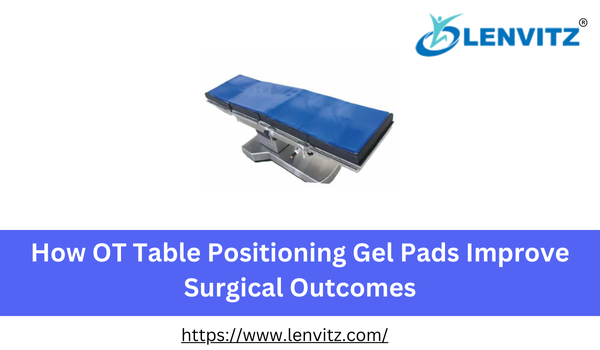
Modern surgical settings prioritize providing safe and comfortable patient experiences. These goals heavily depend on a critical component which medical staff frequently disregard: the OT table positioning gel pad. The special gel pads specifically designed for surgery create multiple benefits during procedures through their role of correct body posturing and their ability to prevent injuries and decrease process hazards.
Optimal Support and Pressure Distribution
Patients undergoing long surgical procedures need to stay in fixed positions without movement because it extends beyond multiple hours. Healthcare professionals need to support immobile patients because failure to do so results in pressure sores and destroys nerves while causing musculoskeletal problems. The design of OT table positioning gel pads uses weight distribution technology to support the body and reduce exposure in sensitive areas particularly sacrum and heels and shoulders. The device distributes body pressure while stopping tissue damage which ensures stable vital signs during surgical operations.
Enhanced Patient Stability
Gel pads maintain excellent patient stability with their anatomical shape and their slip-resistant surfaces while the patient receives surgery. The sudden movements of the patient can damage surgical access and result in complications during medical procedures. Gel pads function as a cushioning material which shapes around patient body shapes for increased stability and reduced movement.
Compatibility with Various Surgical Positions
The collection of OT table positioning gel pads provides multiple shapes and sizes to accommodate different body regions when used in supine and prone positions as well as lithotomy and lateral positions. Different types of pads including headrests and leg supports and full-body mats feature adaptability that suits various requirements in surgical operations.
Head Gel Pad
Medical professionals must use the Head Gel Pad when treating patients who require head, neck or spinal procedures. The pad provides spinal protection and maintains correct body positioning during anesthesia procedures by supporting skull and cervical spine elements. Proper head gel pad design functions to protect the occiput together with the areas behind the ears from developing pressure injuries which are known to be at high risk during extended surgical procedures.
Improving Outcomes Through Prevention
OT table positioning gel pads help enhance recovery rates and decrease postoperative issues through their preventive role against pressure injuries and their reduction of intraoperative complications together with better positioning accuracy. High-quality gel pads produce two substantial benefits through improved patient satisfaction levels and superior clinical outcomes for invested hospitals.
Conclusion
Surgical operations benefit from the essential use of OT table positioning gel pads. These elements of support together with security and defensive capabilities lead to better results during surgery and enhanced patient safety across different medical procedures.